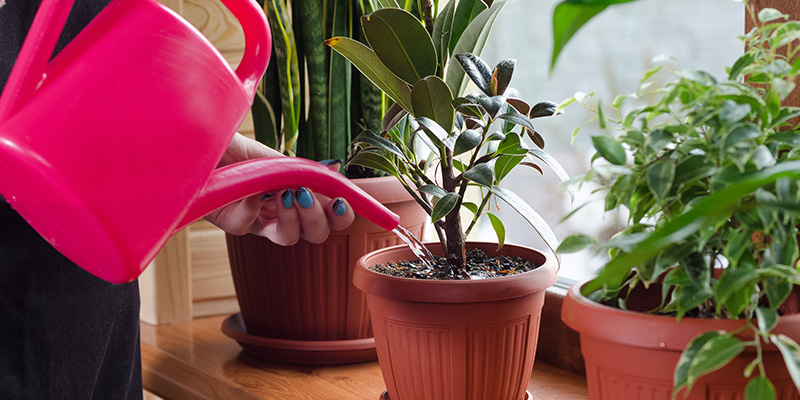Equip yourself with a few book basic tools, such as a hand towel and a watering can, and follow the simple measure outlined on these pages to establish the best growing and flowering conditions for yours plants. Techniques for preparing containers and then potting the different types of plant in tubs, window boxes, and hanging baskets are carefully explained. Practical advice is given to how to maintain a long- lasting display, and there is also information on repotting plants, supporting stems, and training shrubs.
PREPARING CONTAINERS
With all containers, whether made of terracotta, ceramic, stone, concrete, or wood, it is good idea to remove any soil from the pots, and scrub out the inside with disinfectant. By the following these simple measures you will prevent pests and diseases, which might be present on the container’s porous surface, infesting and infecting your healthy plants, and therefore give them the best possible start for a long-lasting display.
SHRUB PLANTING
Careful planting will determine whether a plant flourishes and is long-lasting, or wilts and has a shortened lifespan. Once you have cleaned out the container, and placed several crocks over the drainage hole, start filling the pot with the appropriate potting mix. If the container is fairly large, it is best to fill it layer by layer, firming gently with your fingertips. This avoids compacting the soil, which would inhibit drainage.
WINDOW BOX PLANTING
Prepare the window box and, before you began planting, place it in situ, partly filled with moistened potting mix as it will be too heavy to lift on to a window-ledge when it is packed with plants and watered. Always plant as generously as possible so that flowers and foliage spill over the edges as they grow. Leave space for fast growing plants to expand, but bring slow-growers close together. When complete, give all the plants a thorough watering and feed them regularly as they grow to keep them healthy. When the flowers are past their best, dig out the plants and replace with another selection.
HANGING BASKET PLANTING
I usually overplant hanging baskets because they look most spectacular when overflowing with flowers and have plenty of trailing foliage. A hanging basket has a rounded base so it is a good idea to stand it in a plastic pot when planting to keep it steady and prevent it toppling over. Ensure that the basket sits high on the pot so that plants can be threaded into the sides of the display.
STAKING AND TRAINING
Staking is one of the best ways to provide support for the flexible stems of free- standing plants in containers, especially those situated in exposed sites. Tall perennials and annuals require only single stakes while climbers, shrubs, and tree may need a sturdier tripod of canes or a trellis. Some tree and shrubs can be trained to create a variety of interesting plant shapes.
For more information about Agriculture and Livestock, download Apni Kheti app – Android, iPhone





